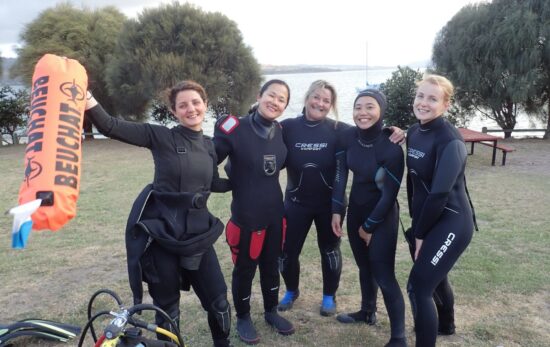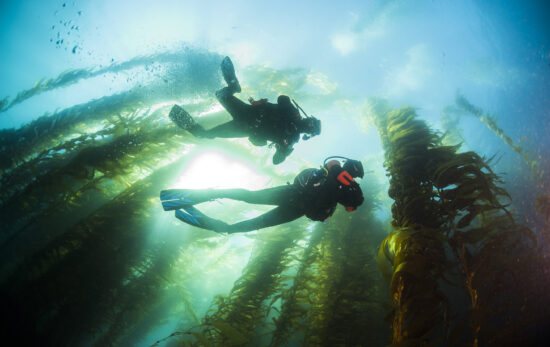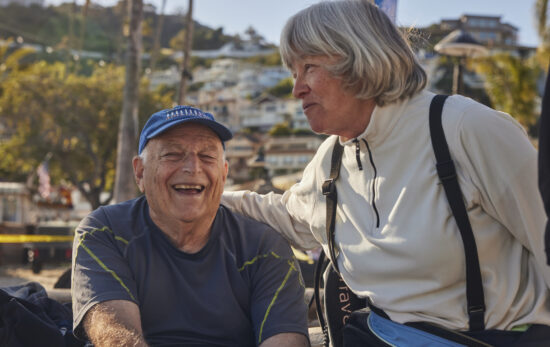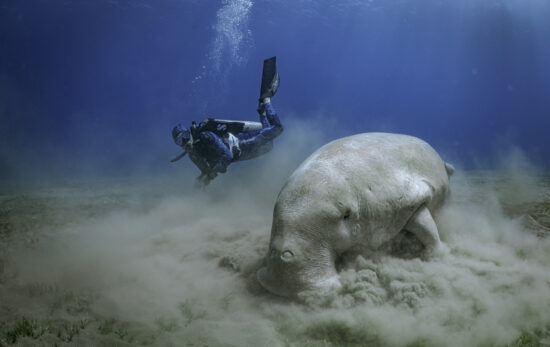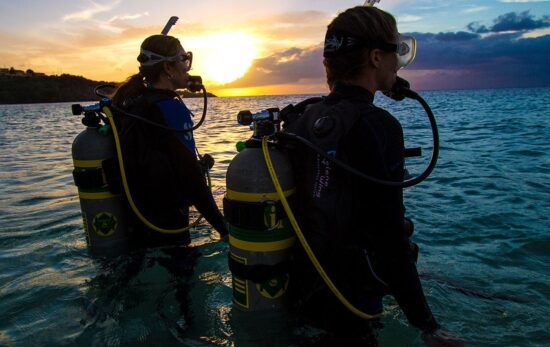Everyone wants dives to last as long as possible. After all, the underwater world is amazing, and the more time we can spend exploring it, the better. Because every diver’s body is different, every person consumes air at a different rate.
Still, there are multiple things you can do to improve your air consumption after your Open Water Diver course. Keep reading for 14 great tips and continuing education options that can help you stay “under for longer”.
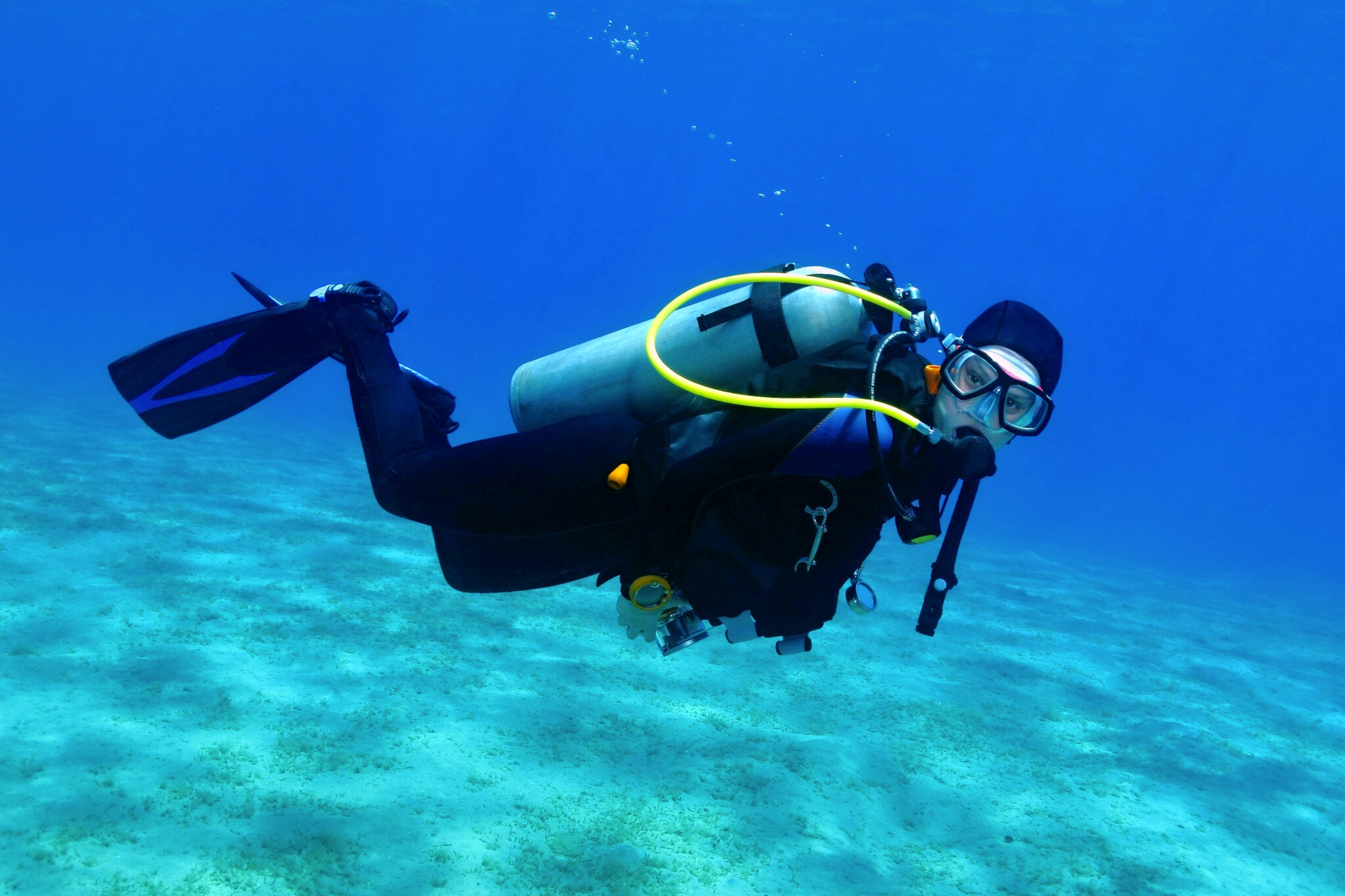
1. Dive Regularly
Want to make your tank last longer? Then dive, dive, dive. The more you dive, the more you become comfortable underwater, and this improves your air consumption.
2. Relax
Fidgeting underwater will only make you use more air than needed. Let yourself float and go with the flow. Move your fins only when needed. Your air will last longer underwater by staying still.
3. Pause
If you can’t get yourself to relax underwater, look for a strategic spot where you can stop moving and just take in the beauty of the marine habitat surrounding you. As you get enticed by the splendor of the deep sea, you’ll start feeling more relaxed, reducing your air consumption.
4. Breathe Deeply
When you’re diving, the worst thing you can do is take short, shallow breaths. Think yoga and breathe slowly and deeply on both the inhale and exhale. Practice at home to get used to this kind of deep breathing. Just remember what you learned during your Open Water Diver course: Breathe at all times and never hold your breath!
5. Practice Neutral Buoyancy
Learning to be neutrally buoyant is a skill that takes a lot of practice, but the payoff is huge. In the ideal scenario, you can stay perfectly level throughout the dive. For example, at the safety stop with about 500 psi/50 bar in your tank (cylinder), you should be able to maintain the same depth for the entire three minutes. If you are struggling to stay at the desired depth because you’re not properly weighted, you won’t be conserving any air. Consider enrolling in the PADI Peak Performance Buoyancy Specialty course to perfect your technique. (More on this below.)
6. Maintain Your Equipment
A simple way to improve air consumption is to reduce leaks. Check your o-rings, inflater hose, and connection points. Pack a save-a-dive kit in case you find anything faulty while you’re out on a dive trip.
7. Work on Your Trim
You can decrease resistance while swimming by making sure you maintain a horizontal position. This allows you to reduce air consumption. The more vertical you are, the more air you will inevitably consume. If you are having difficulty staying horizontal, adjust the position of your weights, tank and BCD.
8. Use the Correct Amount of Weight
If you frequently find yourself in a vertical position, check that you are not overweighted, which results in your hips being drawn down. Try carrying out the predive buoyancy check you learned during your Open Water Diver course.
9. Stay Shallow
If you’re worried your dive will be short, try to stay shallower. You can always move up slightly in the water column to use less air. Just be sure to share your plans with your dive buddy and dive leader prior to the dive.
10. Slow Down
This might seem like common sense, but, while diving, take the time to slow down, relax and enjoy the experience. In order to improve air consumption, avoid darting about.
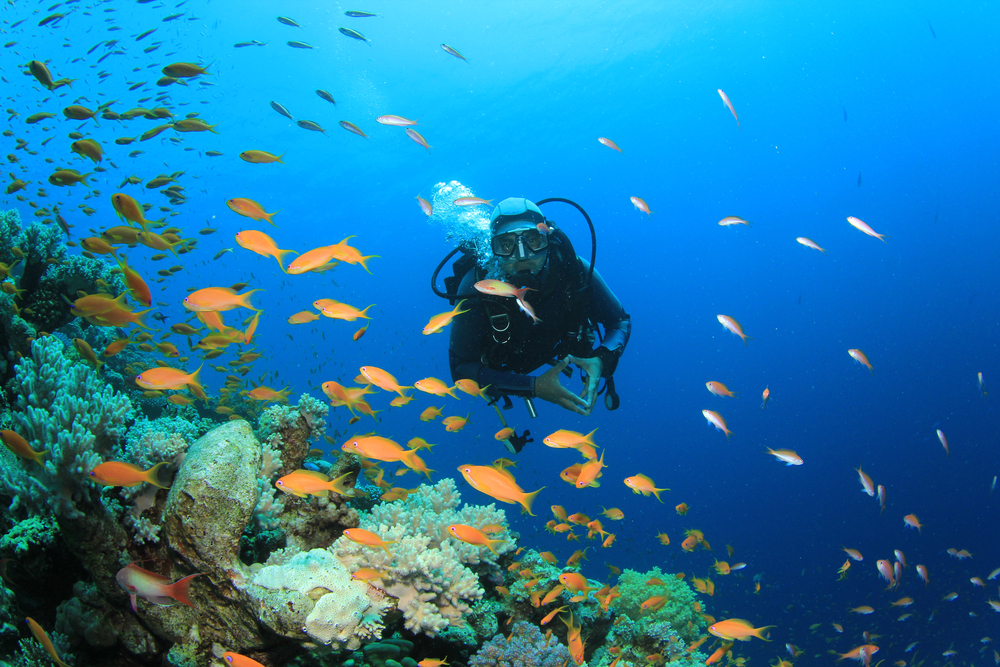
11. Streamline Your Setup
Don’t let any of your accessories dangle from your gear setup. This creates drag and will increase air consumption as you work harder to move through the water column.
12. Stay Close to the Reef/Bottom When Diving Into a Current
If you are diving in a current, position yourself as close to the reef or the bottom as possible (without touching it). The current significantly decreases the closer you are to the reef. If you are out in the blue, the current will be stronger, and you’ll use more air trying to maintain your position.
13. Find Shelter
Use underwater features as ‘shelter’. If you are expending energy swimming in a current, look for features on the reef that you can swim behind to take shelter. A coral bommie is ideal to position yourself next to, take a break, and watch the action pass by! For more tips on drift diving and air consumption, consider enrolling in the PADI Drift Diver Specialty course. (See below.)
14. Go Stress-Free
Maintain buddy contact and awareness. Stress and swimming are two things that will definitely increase your air consumption. There is nothing more stressful than thinking you have lost your buddy and swimming around trying to relocate them!
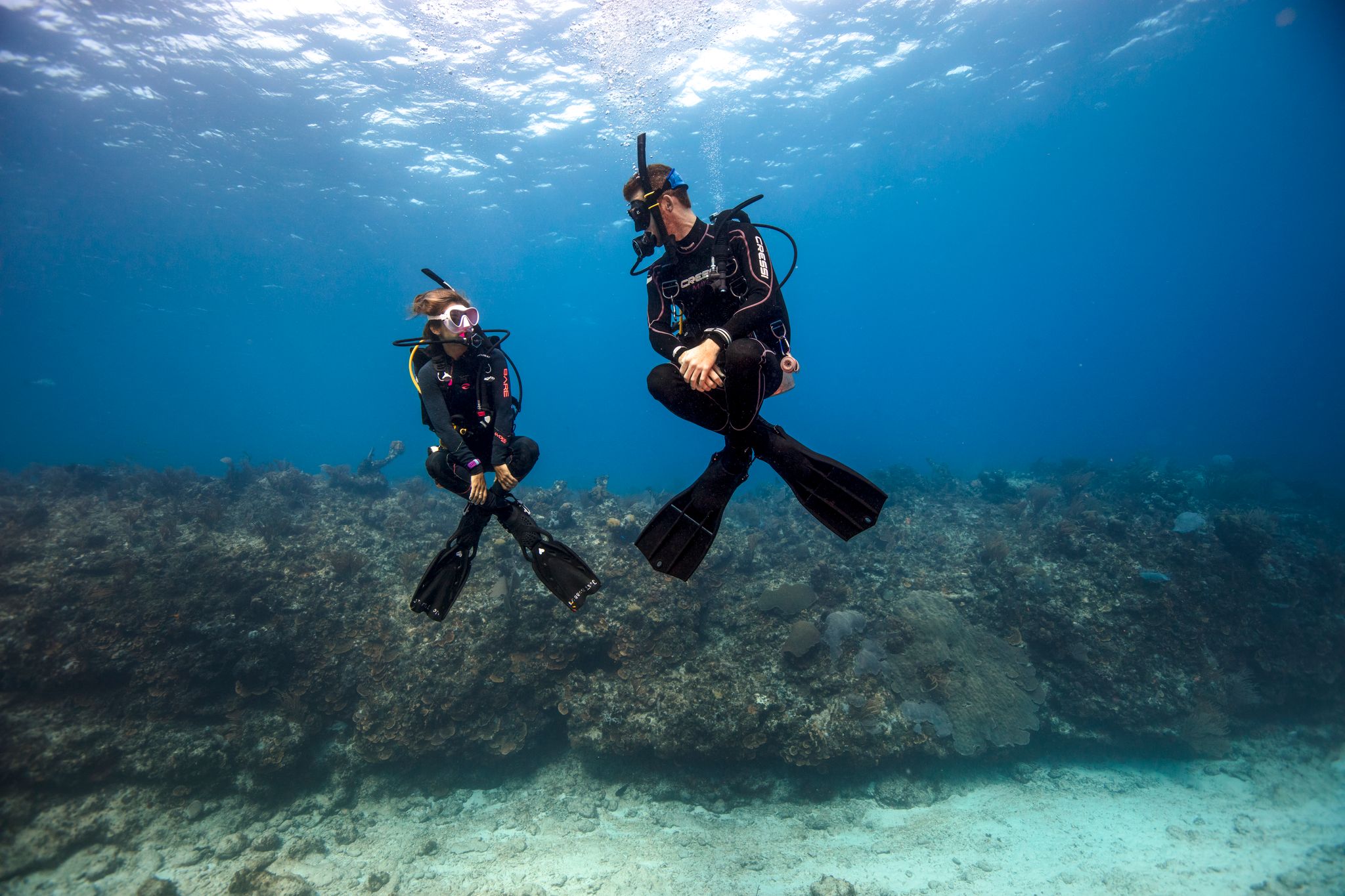
PADI Courses That Can Help Improve Air Consumption
Knowledge, practice, and experience all play essential roles in reducing and improving your air consumption. Continuing your diver education is a great way to develop your skills AND your air consumption at the same time. There are a number of PADI courses that are particularly useful when it comes to making your air last longer, below are five of our top recommendations.
1. PADI Advanced Open Water Diver
When you take the PADI Advanced Open Water Diver course, you’ll make five Adventure Dives under the guidance of your instructor. A deep dive and an underwater navigation dive are mandatory, while the other three dives are yours for the choosing. During your five dives, you’ll grow in confidence, which means lower stress levels and better air consumption. For the best results regarding air consumption, select optional Adventure Dives in line with the PADI Specialty Diver courses listed below. In each of these dives, and the associated theory sessions, you’ll pick up essential tips and skills that can significantly improve your breathing and air consumption rate while diving.
2. PADI Peak Performance Buoyancy Specialty
Good buoyancy control is crucial to good air consumption. During the PADI Peak Performace Buoyancy Specialty, you’ll learn how to check you are properly weighted and how to use weights for excellent trim. You’ll also look at how to use your breathing effectively and how to move effortlessly underwater – all of which result in lower air consumption and longer dives.
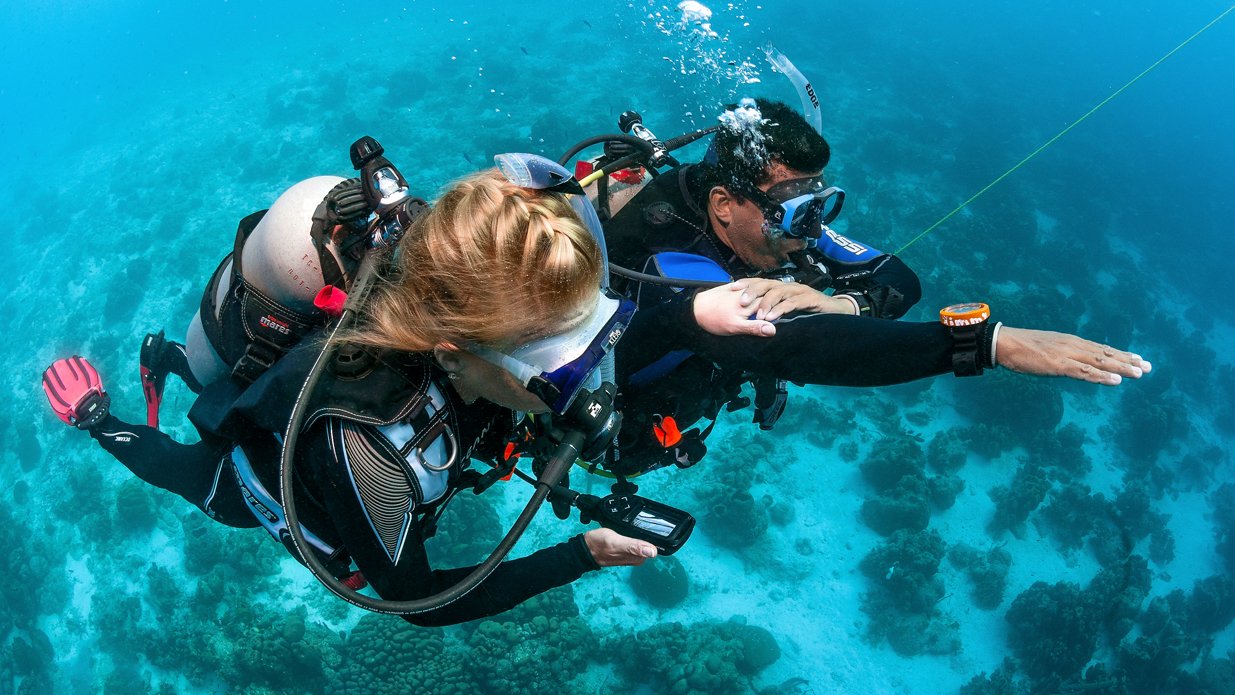
3. PADI Underwater Navigator Specialty
If you are already a PADI Advanced Open Water Diver, you will have completed the first dive of the PADI Underwater Navigator Specialty!
Learning how to navigate effectively and efficiently can significantly reduce the potential for increased stress created by not knowing where you are and feeling lost. Effective navigation also eliminates the need to make excessive and potentially exhausting swims trying to get ‘back on track.’ There’s no doubt that the ability to navigate confidently and competently underwater reduces air consumption.
4. PADI Deep Diver Specialty
Whether you intend to make deep dives in the future or stay above 18 meters/60 feet, the PADI Deep Diver Specialty develops your knowledge of pressure changes, decompression, how the human body is affected by depth, and how to safely and competently handle any issues that occur while diving at depth.
Having a greater understanding of deep diving reduces stress that may be induced by depth or the potential for depth, and it equips you with the knowledge to develop deep diving procedures and emergency plans. Your advanced knowledge about diving below 18 meters/60 feet, and how to handle these dives, will lead to more comfortable, enjoyable, and ultimately more air-efficient underwater experiences.
Note: If you are already a PADI Advanced Open Water Diver, you have already completed the first dive of the PADI Deep Diver Specialty certification.
5. PADI Drift Diver Specialty
Diving in currents increases a diver’s air consumption because of two main factors:
- Increased stress levels
- Increased physical exertion
During the PADI Drift Diver Specialty course, you’ll learn about tides and other natural conditions that cause or result in currents. You will also learn and practice techniques for drift dive planning, drift diving entries and exits, how to assess and dive in currents, and drift diving emergency procedures.
Your new skills will combat any stress you may have otherwise experienced regarding diving in currents, together with reducing the amount of energy you need to use to maintain yourself underwater when drift diving.
What’s Next?
Are you ready to book your next dive trip and put these tips to use underwater? Check out amazing scuba diving destinations, dive centers, resorts, and liveaboards on PADI Travel!
Keep Reading
You may also be interested in reading some of our other recent articles:
- 9 Tips for Improving Air Consumption
- The Benefits of Using Nitrox vs Air
- 5 Ideas for Scuba Diving New Year Resolutions
This blog was originally written by Jacki Hutchings and published on the Diviac Magazine.
